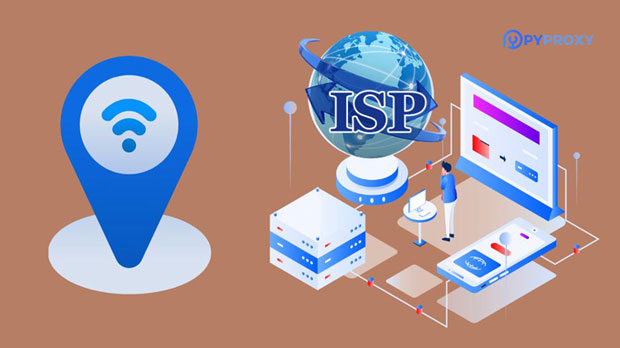In today's digital world, privacy and security are becoming increasingly important for mobile users, especially those on Android devices. One tool that has gained popularity in maintaining privacy and circumventing restrictions is the socks5 proxy. Unlike traditional proxies, SOCKS5 offers enhanced anonymity, reduced latency, and flexibility, making it ideal for a variety of use cases on Android. This article explores the common scenarios where free socks5 proxies are utilized on Android systems, helping users understand their benefits and potential drawbacks. 1. Bypassing Geo-Restrictions and Accessing Restricted ContentA significant benefit of using a SOCKS5 proxy is its ability to help Android users bypass geographic restrictions. Many streaming services, websites, and apps restrict access to their content based on the user’s geographical location. This could be due to licensing agreements or government regulations. By connecting to a socks5 proxy server located in a different country, users can make it appear as though they are accessing the internet from that location. This allows them to access content that might otherwise be unavailable in their region.For example, users can access foreign streaming platforms, gaming servers, or region-specific content from news sites and social media platforms. This makes the SOCKS5 proxy particularly useful for individuals who travel frequently, expatriates, or anyone looking to access content they wouldn't otherwise be able to view.2. Enhancing Privacy and Anonymity on AndroidWith growing concerns over online privacy, many users turn to proxies to shield their activities from prying eyes. A SOCKS5 proxy on Android helps mask the user's real IP address, making it harder for websites, advertisers, and even hackers to track their online behavior. Unlike HTTP proxies, which only route specific types of traffic (usually web traffic), SOCKS5 proxies route all types of internet traffic, including email, torrents, and instant messaging apps. This makes it more versatile in ensuring complete privacy.Additionally, because SOCKS5 proxies do not modify the data being sent (as is the case with HTTP proxies), they provide a level of security that ensures communication between the user and the destination server is kept private. This level of anonymity is especially beneficial for individuals who need to protect their identity while browsing, engaging in online activities, or using financial services on their Android devices.3. Improved Online Security and Protection Against Cyber ThreatsThe internet is full of threats, including hackers, malware, and phishing attempts. By using a SOCKS5 proxy on an Android device, users can add an extra layer of security. SOCKS5 proxies act as intermediaries, helping to conceal the user's real IP address. This makes it harder for attackers to trace the user’s location or identity. If a user is accessing sensitive information, such as logging into online banking, shopping, or social media accounts, a SOCKS5 proxy can help minimize the risk of these accounts being compromised.Moreover, since SOCKS5 proxies are known for their ability to tunnel data securely, they also help mitigate the risks associated with using public Wi-Fi networks. Public Wi-Fi hotspots are often insecure, making them a prime target for hackers looking to steal personal information. With a SOCKS5 proxy, users can secure their internet connection, even on open networks, protecting themselves from malicious attacks.4. Enhanced Performance in Online GamingFor Android users who are avid gamers, a SOCKS5 proxy can help optimize online gaming experiences. Many multiplayer games have servers located in different regions, and connecting to a game server from a distant location can result in high latency and lag. By using a SOCKS5 proxy located closer to the game server, users can reduce ping times, leading to a smoother and more responsive gaming experience.Additionally, some game developers may restrict access to certain servers based on geographical locations. A SOCKS5 proxy can help bypass these restrictions, allowing users to connect to game servers that would otherwise be unavailable. This is particularly useful for players who want to participate in global tournaments or access content that is locked to certain regions.5. Accessing Blocked Websites in Authoritarian RegionsIn regions where access to certain websites or apps is heavily regulated or blocked by governments, a SOCKS5 proxy can be a useful tool for Android users. Governments often censor content or restrict access to platforms such as social media, news websites, and blogs. Using a SOCKS5 proxy can help users bypass these government-imposed restrictions by making it appear as though they are accessing the internet from a location where such restrictions do not exist.This use case is particularly relevant in countries with strict internet censorship, where access to free information and communication platforms is limited. By using a SOCKS5 proxy, individuals can freely access the information they need without fear of censorship or surveillance.6. Downloading Torrents AnonymouslyAnother common use case for SOCKS5 proxies on Android devices is for anonymous torrenting. While torrenting itself is legal in many regions, users may wish to hide their IP address to avoid tracking by copyright enforcement agencies, internet service providers, or other entities that monitor file-sharing activities. By using a SOCKS5 proxy, users can prevent their real IP address from being exposed while downloading or uploading torrents.Unlike other types of proxies or VPNs, SOCKS5 proxies do not slow down the connection significantly when torrenting, making them a popular choice for users who prioritize fast download speeds. However, it’s important to note that using a proxy does not provide complete security against legal risks, and users should always be mindful of the laws regarding torrenting in their region.7. Facilitating Market Research and Competitive IntelligenceBusinesses and market researchers often use SOCKS5 proxies on Android devices for activities like web scraping, competitive intelligence gathering, and market research. When gathering data from various websites, it’s important to ensure that the requests come from different IP addresses to avoid being blocked by the target websites. By using a SOCKS5 proxy, researchers can rotate between different proxy servers, ensuring that their activity remains undetected and uninterrupted.Additionally, SOCKS5 proxies allow users to simulate traffic from various locations, providing access to region-specific data. This feature is particularly useful when conducting research on products, services, or trends that are specific to particular geographic areas.ConclusionFree SOCKS5 proxies on Android devices offer a versatile and powerful tool for enhancing privacy, security, and online freedom. Whether bypassing geo-restrictions, protecting sensitive data, enhancing online gaming experiences, or conducting research, the use cases for SOCKS5 proxies are numerous. However, users should always be cautious when choosing a proxy provider, as the free services can sometimes come with limitations or risks, such as slower speeds, potential data logging, or security vulnerabilities.For anyone using SOCKS5 proxies on Android, it’s essential to understand the capabilities and limitations of the technology and to adopt best practices for securing personal information. By using proxies responsibly, users can enjoy a safer, more open internet experience, with enhanced privacy and access to a broader range of content.
Jan 03, 2025
![arrow]()



















































